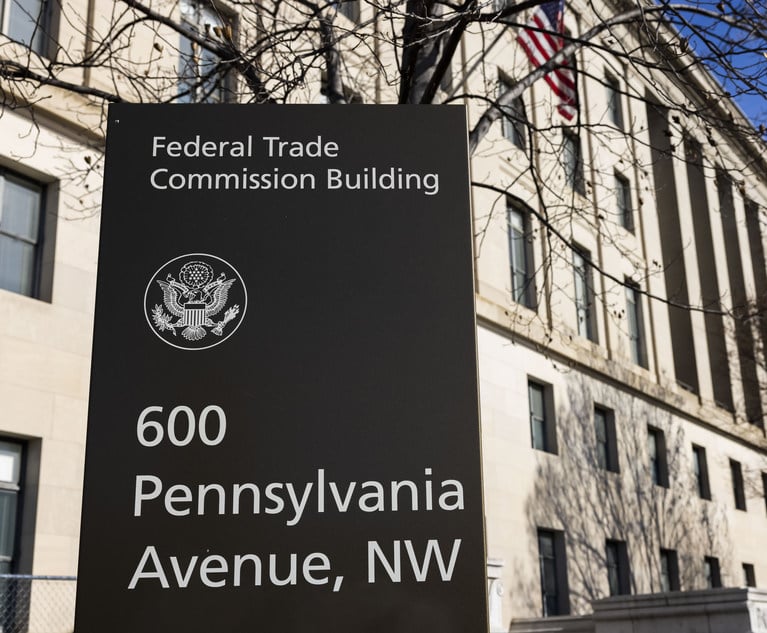Experts: Hackers, Insiders and Regulators Are Among Companies' Biggest Threats
In-house data privacy and other cybersecurity experts spoke during a panel discussion at the National Asian Pacific American Bar Association's Southeast Regional Conference in Atlanta last week.
April 17, 2018 at 02:55 PM
5 minute read

When Verizon released its 2018 Data Breach Investigations Report last week, ransomware, for the first time, topped the list as the most prevalent type of cyber incident.
According to in-house data privacy and other cybersecurity experts, cyber threats are one of the fastest evolving enterprise-wide issues that companies face, said Sou Ford, senior vice president at insurance broker and consultancy Willis Towers Watson. Ford was a participant and panel moderator at a discussion on cybersecurity at the National Asian Pacific American Bar Association's Southeast Regional Conference in Atlanta last week.
Phyllis Sumner, a partner at King & Spalding, said of ransomware—a form of cyber extortion in which hackers agree to not expose sensitive data in exchange for a ransom payment—that “unfortunately, criminals are seeing that this is effective, a way for them to make money because oftentimes companies may think it's easier to pay the criminal than to take steps ahead of time to prepare.”
Having an incident response plan is the key to preparedness, but there are several things to consider in relation to the plan, the panelists said.
In addition to performing exercises and walking through a mock cyber incident to “stress test” the plan before an actual event, it should take into account all of the stakeholders in an organization who need to be involved in a response to the incident, said Darren Bowie, chief privacy officer at AIG Inc.
Added Stacey Keegan, chief privacy officer and assistant general counsel at The Home Depot:
“Collaboration across many teams is key. It's important for an entire enterprise to recognize that data security is not the singular role of IT. It's an enterprisewide risk and needs to be embraced as a responsibility for the entire organization.”
In addition, the plan, to the extent possible, should not contain issues that make it difficult to put into practice, Sumner said.
“There's a big variety in what companies have, from a simple plan that doesn't consider a variety of issues, to very detailed plans that are just not workable when you are in the middle of the emergency,” she said.
Companies should have a communication plan in place in the event of an incident, Keegan said. This plan, she added, should address the issue of how relevant information is going to be communicated—not only “up,” to business executives and board members—but “out” to employees and other members of the organization, as well.
“Most of the [consumer] questions are going to come to you via your call center or people who walk into the store if you're a retailer, and where there is no information, that vacuum will fill with bad information,” she said.
Beyond the incident plan, companies should evolve their employee training methods as the risk evolves, the panelists said.
This is particularly true, given that 1 out of 5 cyber incidents is caused by human error, though frequently the insiders who expose the data are not acting maliciously, AIG's Bowie said.
“You have to think about new and creative ways to train, train, train,” he said.
Simply taking a hard look at where a company's data resides and who has access to it can prove surprisingly effective in eliminating some of this insider threat.
“If you take a role-based approach, you can remove human error by removing the human and making sure he doesn't have access to information he shouldn't,” Keegan said.
Due to some recent high-profile attacks by both hackers and insiders, however, companies' data protection policies are also coming under increased scrutiny by regulators, the panelists said. While there is no federal data-breach notification law, as of earlier this month, all 50 states have one on the books, Keegan said.
And they are being enforced, Bowie added, both at the state level by attorneys general and on the federal level. For example, the U.S. Federal Trade Commission, arguing that failure to adopt reasonable security controls is an unfair or deceptive trade practice, has recently brought more than 60 actions for such alleged violations, he said.
Added King & Spalding's Sumner: “Companies that fall victim to a significant criminal act become targeted by multiple regulators, including, as we've seen with Equifax and Facebook, Congress.”
This content has been archived. It is available through our partners, LexisNexis® and Bloomberg Law.
To view this content, please continue to their sites.
Not a Lexis Subscriber?
Subscribe Now
Not a Bloomberg Law Subscriber?
Subscribe Now
NOT FOR REPRINT
© 2025 ALM Global, LLC, All Rights Reserved. Request academic re-use from www.copyright.com. All other uses, submit a request to [email protected]. For more information visit Asset & Logo Licensing.
You Might Like
View All
A Harris Administration Would Likely Review Merger Effects on Workers, Consumers, Antitrust Experts Say
4 minute read
Harris' Promised Ban on Food Price Gouging Could Be Difficult to Implement, Antitrust Experts Say
3 minute read
FTC, For-Profit Online Education Group Reach $43.5M Agreement After Consumer Protection Suit Filed Monday

Plaintiffs Overcome Critical Stages in Litigation Against Sig Sauer's P320, Including $2.35M Verdict in Georgia
Trending Stories
- 1Reviewing Judge Merchan's Unconditional Discharge
- 2With New Civil Jury Selection Rule, Litigants Should Carefully Weigh Waiver Risks
- 3Young Lawyers Become Old(er) Lawyers
- 4Caught In the In Between: A Legal Roadmap for the Sandwich Generation
- 5Top 10 Developments, Lessons, and Reminders of 2024
Who Got The Work
J. Brugh Lower of Gibbons has entered an appearance for industrial equipment supplier Devco Corporation in a pending trademark infringement lawsuit. The suit, accusing the defendant of selling knock-off Graco products, was filed Dec. 18 in New Jersey District Court by Rivkin Radler on behalf of Graco Inc. and Graco Minnesota. The case, assigned to U.S. District Judge Zahid N. Quraishi, is 3:24-cv-11294, Graco Inc. et al v. Devco Corporation.
Who Got The Work
Rebecca Maller-Stein and Kent A. Yalowitz of Arnold & Porter Kaye Scholer have entered their appearances for Hanaco Venture Capital and its executives, Lior Prosor and David Frankel, in a pending securities lawsuit. The action, filed on Dec. 24 in New York Southern District Court by Zell, Aron & Co. on behalf of Goldeneye Advisors, accuses the defendants of negligently and fraudulently managing the plaintiff's $1 million investment. The case, assigned to U.S. District Judge Vernon S. Broderick, is 1:24-cv-09918, Goldeneye Advisors, LLC v. Hanaco Venture Capital, Ltd. et al.
Who Got The Work
Attorneys from A&O Shearman has stepped in as defense counsel for Toronto-Dominion Bank and other defendants in a pending securities class action. The suit, filed Dec. 11 in New York Southern District Court by Bleichmar Fonti & Auld, accuses the defendants of concealing the bank's 'pervasive' deficiencies in regards to its compliance with the Bank Secrecy Act and the quality of its anti-money laundering controls. The case, assigned to U.S. District Judge Arun Subramanian, is 1:24-cv-09445, Gonzalez v. The Toronto-Dominion Bank et al.
Who Got The Work
Crown Castle International, a Pennsylvania company providing shared communications infrastructure, has turned to Luke D. Wolf of Gordon Rees Scully Mansukhani to fend off a pending breach-of-contract lawsuit. The court action, filed Nov. 25 in Michigan Eastern District Court by Hooper Hathaway PC on behalf of The Town Residences LLC, accuses Crown Castle of failing to transfer approximately $30,000 in utility payments from T-Mobile in breach of a roof-top lease and assignment agreement. The case, assigned to U.S. District Judge Susan K. Declercq, is 2:24-cv-13131, The Town Residences LLC v. T-Mobile US, Inc. et al.
Who Got The Work
Wilfred P. Coronato and Daniel M. Schwartz of McCarter & English have stepped in as defense counsel to Electrolux Home Products Inc. in a pending product liability lawsuit. The court action, filed Nov. 26 in New York Eastern District Court by Poulos Lopiccolo PC and Nagel Rice LLP on behalf of David Stern, alleges that the defendant's refrigerators’ drawers and shelving repeatedly break and fall apart within months after purchase. The case, assigned to U.S. District Judge Joan M. Azrack, is 2:24-cv-08204, Stern v. Electrolux Home Products, Inc.
Featured Firms
Law Offices of Gary Martin Hays & Associates, P.C.
(470) 294-1674
Law Offices of Mark E. Salomone
(857) 444-6468
Smith & Hassler
(713) 739-1250






